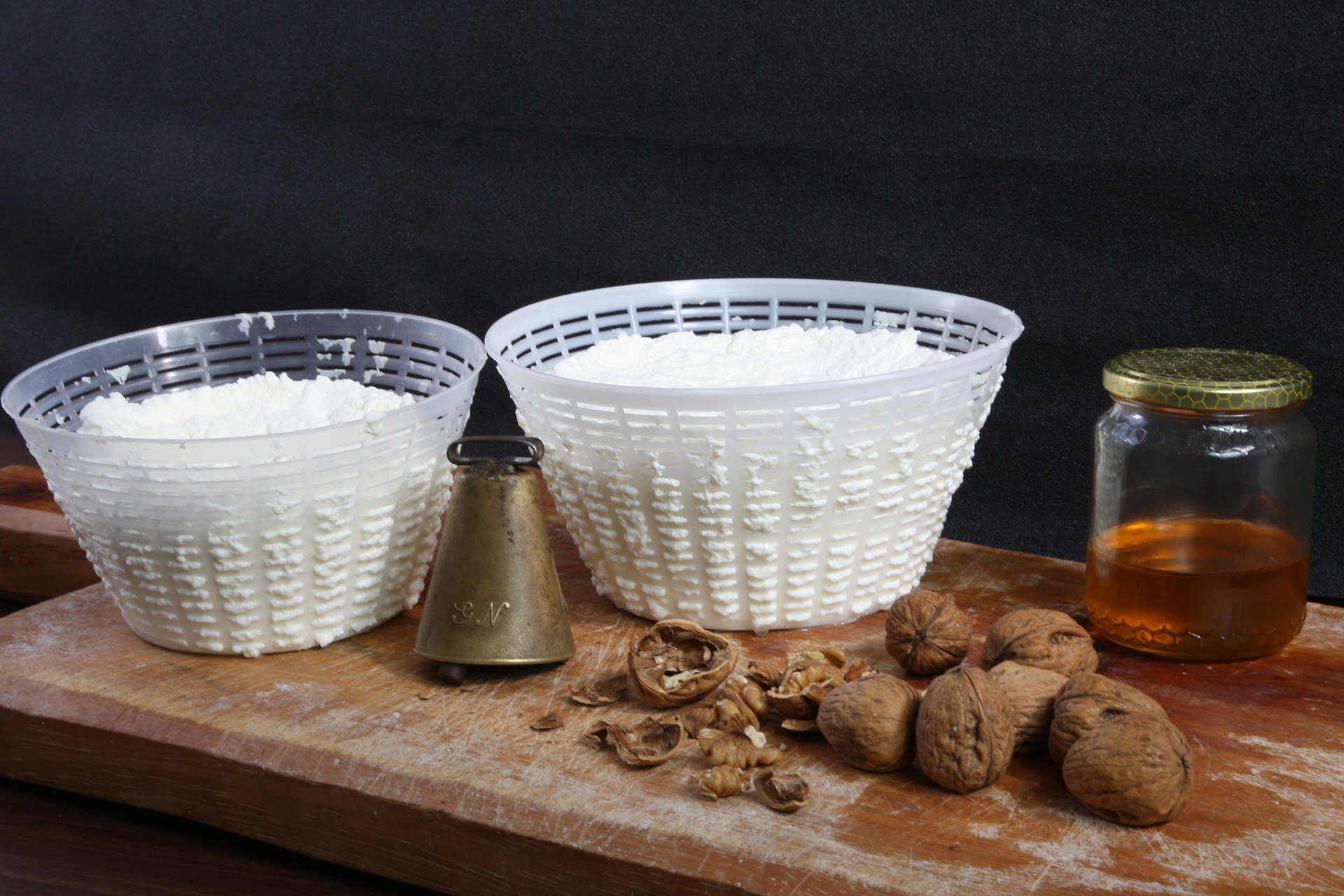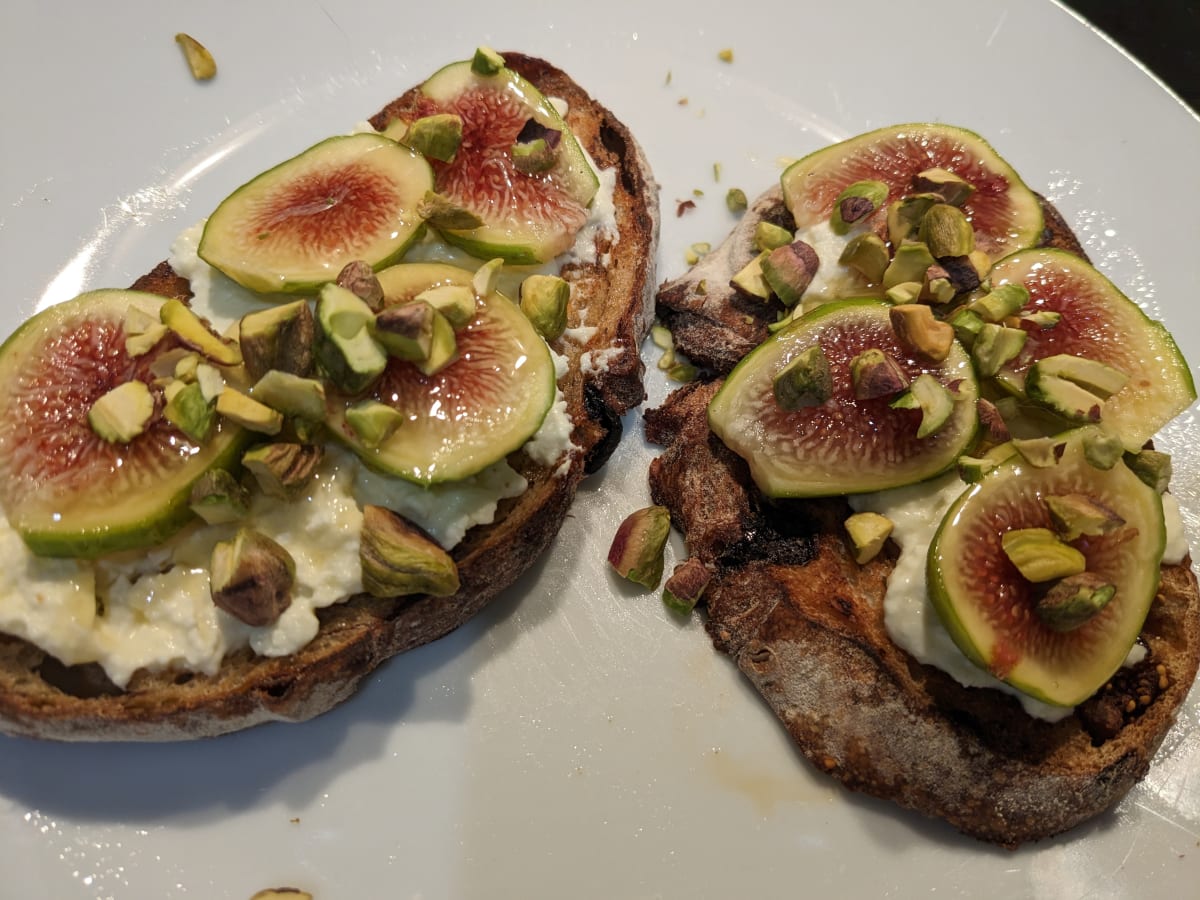Let’s talk about ricotta
Ricotta is one of the easiest of the cheeses to make at home with little equipment required (you will need a kitchen thermometer). It is so versatile, good on its own and in sweet or savoury dishes. First, some facts about cheese making. Cheese is...

Ricotta is one of the easiest cheeses to make at home, with little equipment required, though you will need a kitchen thermometer. It is so versatile, good on its own and in sweet or savoury dishes.
First, some facts about cheese-making. Cheese is made from dairy milk (cows, goat, sheep or buffalo) through coagulation of the milk protein casein. Coagulation – separating the milk into solid curds and liquid whey – is caused through the addition of enzymes, often after the milk is acidified.
There are more than 1000 types of cheeses of varying styles, textures and flavours. The variations occur from the type of milk used, the fat content, the enzymes of rennet or bacteria and the processing and ageing techniques.
Fresh cheese (made from fresh curds that have not been pressed or aged) is made by curdling the milk through the addition of acids such as vinegar or lemon juice – the technique used to make ricotta. Ricotta (the Italian word for “re-cooked”) is traditionally made from the whey separated from rennet-set hard cheeses, leaving it at room temperature and letting natural bacteria do the acidification. For the home cook, fresh milk is the way to go, but purists would call the product ricotta-like (and not a cheese).
Ricotta is easy to get wrong, though simple to get right when you know the rules. A bad ricotta is grainy, rubbery, watery or thin. You can buy good ricotta from the deli department of any grocery store. Best not to buy the cheaper packaged version from the fridge section. Once you perfect your own, there’s no going back to store bought.
To make ricotta, simply the heat the milk, your chosen acid and salt to taste. Heat to a temperature where curds form at about 90˚C (some recipes recommend to heat the milk and then add the acid). Remove from the heat and let it sit for a few minutes, then gently scoop the curds from the whey. You can use buttermilk, lemon juice, lime juice, vinegar or powdered citric acid for the acid component. The version made with buttermilk is silky and rich, a good lower-fat substitute for cream. You will be left with protein-rich whey (used to manufacture the powdered protein supplement), which does not need to go to waste (see below for whey use ideas).
What you need to know for the best results:
- Have the correct ratio of acid to milk as too much will affect the taste. The rule of thumb for 1L of milk is either of these acids:
– 250 ml buttermilk, or
– 20ml distilled white vinegar (the most neutral flavour), lemon or lime juice, or
– half teaspoon citric acid - Salt is important, a pinch or a teaspoon
- Do not over or underheat the milk. The sweet spot is between 85-95˚C. If you underheat you will not get the yield or if you overheat the ricotta will be dry and grainy. Do not boil
- Bring to heat slowly – it should take about an hour
- Do not mix while the curds are forming
- Don’t forget to rest the curds in the whey prior to scooping – 10 minutes at least
- Scoop gently into a ricotta basket, if you have one
- Use a good quality fresh milk
- You can add cream to the milk if you want a decadent ricotta
Uses for the curds – with a week (or maybe two, at a pinch)
Where do I start? Here are some options:
- Fresh on toast – for savoury, add tomatoes and fresh herbs; for sweet, add sliced figs and a drizzle of honey

- Baked on its own – the ricotta needs to be well-drained. Pack into an oven-proof container and bake at 180˚C for 15-20 minutes until starting to brown. Add toppings, sweet or savoury. My favourite is olive oil, preserved lemon and za’atar
- Baked with other ingredients, e.g., egg, parmesan, fresh herbs, lemon zest, orange zest, honey
- Ricotta pancakes
- As an ingredient in a cake
- As an ingredient in a savoury tart
- Make ricotta gnocchi
- Whipped as a substitute for cream
Uses for the whey – within a week or freeze
- Add to smoothies (be mindful of the acid you have used to make the ricotta as it will affect the flavour)
- Use in casseroles as a substitute for stock – especially good for lamb, pork and silverside
- Cook lentils, rice, pasta, risotto, polenta and oats
- Substitute for water or milk in bread making, pancakes and biscuits
- Use to lacto-ferment vegetables for sauerkraut and chutney
- Soak grains and legumes to improve digestibility
- Add to your dog’s dry food – it is low in lactose
- Diluted, water your plants
To try my 'ricotta-like' recipe, click here.





